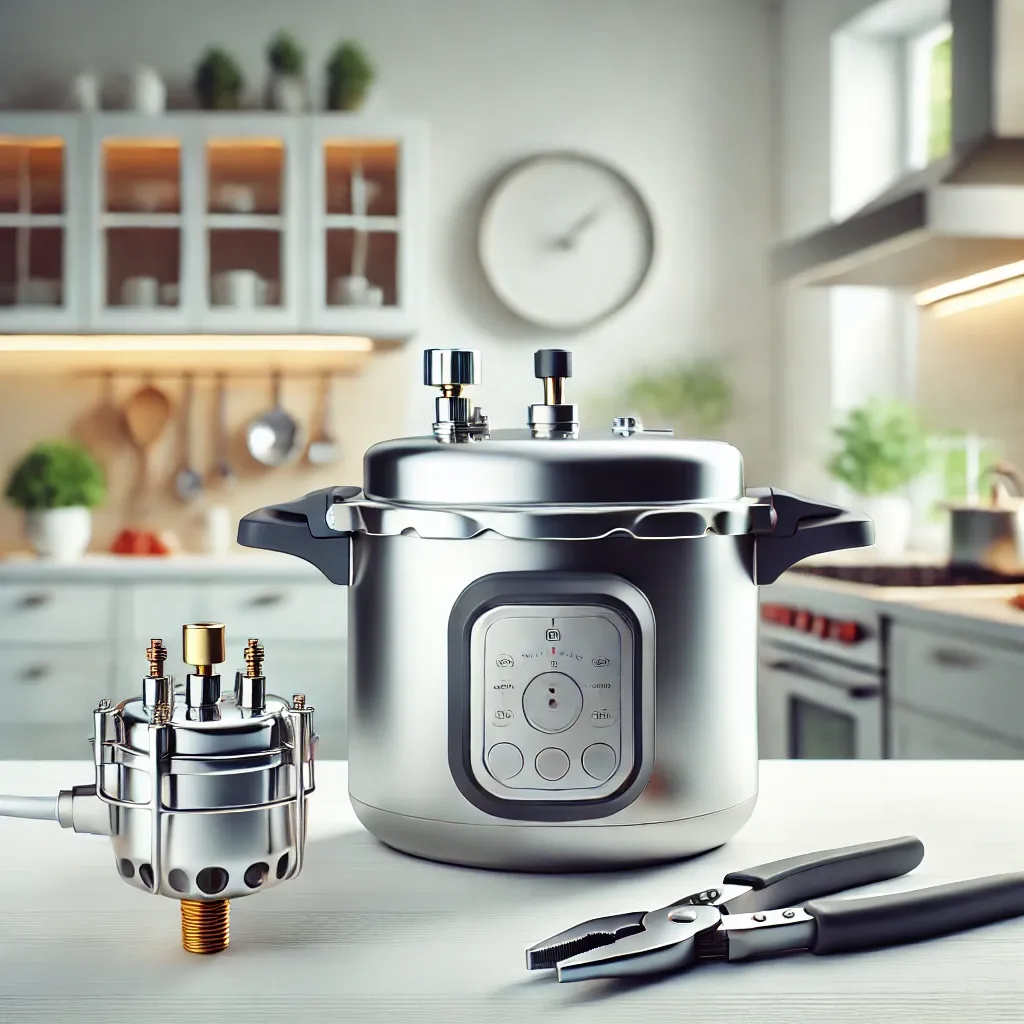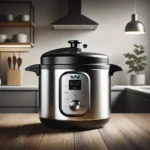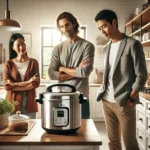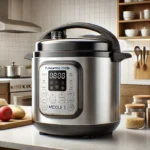Wondering how to get started with your pressure cooker, maintain it, or handle issues like a broken one? Learn about the first use, cleaning tips, and troubleshooting advice in this comprehensive guide.
First Use of a Pressure Cooker
A pressure cooker is a versatile kitchen appliance that allows you to prepare meals faster by using high pressure to increase the boiling point of water. Whether you’re a novice or an experienced cook, understanding how to use a pressure cooker correctly is essential for achieving the best results and ensuring safety.
Steps for First Use
When using your pressure cooker for the first time, here are the essential steps you need to follow:
-
Read the Manual Always read the user manual for your specific model. Different brands may have slight variations in design and safety instructions.
-
Check for Parts Ensure all parts, such as the gasket, valve, and lid, are properly installed.
-
Test with Water Before cooking any food, perform a water test. Fill the cooker with 2-3 cups of water, lock the lid, and set the pressure cooker on the stove. This helps you familiarize yourself with the pressure-building process.
-
Seal and Lock Make sure the lid is sealed tightly, and the safety valve is correctly positioned.
-
Adjust Pressure Set the cooker to the appropriate pressure setting based on the recipe you’re using.
Safety Precautions
Pressure cookers are safe when used correctly, but it’s crucial to follow safety protocols:
-
Never force open the lid while the cooker is under pressure.
-
Ensure the vent valve is free of debris and can release pressure easily.
-
Avoid overfilling the pressure cooker, as it could lead to unsafe situations.
Using the pressure cooker for the first time is about understanding its settings and ensuring all parts are in good condition. It’s also important to familiarize yourself with the various cooking modes, whether for high-pressure or slow cooking.
👉 Learn more about first-time use 👈
Pressure Cooker Maintenance and Washing
One of the key aspects of owning a pressure cooker is regular maintenance and proper cleaning. A well-maintained pressure cooker not only lasts longer but also ensures food safety and efficient performance.
Steps to Clean and Maintain Your Pressure Cooker
-
After Every Use Always allow the pressure cooker to cool down completely before cleaning it. Use mild soap and warm water to clean the cooker’s exterior and interior. Avoid abrasive sponges that can scratch the surface.
-
Clean the Gasket The gasket is a vital part of the pressure cooker, so ensure it’s thoroughly cleaned after each use. Wash it gently with warm water and check for any wear and tear.
-
Clean the Vent Valve The vent valve allows steam to escape, so keep it clear of food particles. Use a small brush or toothpick to ensure it remains free of blockages.
-
Inspect the Pressure Regulator Regularly check the pressure regulator to make sure it’s functioning correctly. If it becomes stuck or clogged, it can affect the cooker’s performance.
-
Avoid Storing with the Lid On When storing your pressure cooker, leave the lid slightly ajar. This prevents the buildup of moisture inside, which could lead to mold growth.
Tips for Longer Lifespan
-
Regular Lubrication Lightly grease the gasket with a small amount of vegetable oil to keep it flexible.
-
Store in a Dry Place Moisture can damage parts over time, so store your pressure cooker in a dry, cool place.
-
Check for Wear and Tear After several uses, inspect parts like the gasket and safety valve. If they’re worn out, replace them immediately.
A clean and well-maintained pressure cooker can provide years of efficient cooking. Regular maintenance will also prevent common issues that could arise from neglecting the care of your appliance.
👉 Learn more about pressure cooker cleaning 👈
Troubleshooting: What to Do if Your Pressure Cooker Breaks
Even with proper care, pressure cookers can experience issues over time. If your pressure cooker is broken or malfunctioning, here’s a guide on how to troubleshoot and fix common problems.
Common Problems and Solutions
-
Pressure Cooker Won’t Seal
-
Cause The gasket might be dirty, damaged, or incorrectly positioned.
-
Solution Inspect the gasket for any visible cracks or tears. Clean it thoroughly and reposition it properly. If damaged, replace the gasket.
-
-
Pressure Cooker Leaks Steam
-
Cause The lid might not be properly secured or the vent valve might be clogged.
-
Solution Ensure the lid is locked tightly. Clean the vent valve to remove any blockages.
-
-
The Cooker Doesn’t Build Pressure
-
Cause The stovetop heat may be too low, or there might be a problem with the pressure regulator.
-
Solution Check that you’re using the right heat setting. If the regulator is faulty, replace it.
-
-
Burnt Food or Uneven Cooking
-
Cause The cooking time may not be adjusted correctly, or the cooker may not have enough liquid.
-
Solution Ensure you’re following the recipe instructions for pressure settings and cooking time. Always add enough liquid to the cooker before sealing the lid.
-
-
Damaged Safety Valve
-
Cause The safety valve can wear out over time.
-
Solution If the valve is damaged, replace it immediately to prevent safety risks.
-
When to Seek Professional Help
If the pressure cooker is still malfunctioning after troubleshooting, or if the lid won’t lock at all, it may be time to consult a professional. Often, pressure cookers come with warranties that cover repairs or replacements, so it’s worth checking with the manufacturer.
Understanding how to identify common issues and knowing when to repair or replace parts will save you time and ensure the cooker’s longevity.
👉 Find troubleshooting solutions for your pressure cooker 👈
Conclusion
A pressure cooker is a powerful kitchen tool that can speed up cooking times, make meals more flavorful, and offer a healthier alternative to traditional cooking methods. By following the right steps for first-time use, maintaining the cooker regularly, and troubleshooting common problems, you can ensure it continues to function optimally for years to come.
Remember, whether you are a beginner or an expert, learning to use and care for your pressure cooker will enhance your cooking experience. Treat your appliance well, and it will serve you efficiently, helping you prepare delicious meals in a fraction of the time.
“Good things come to those who cook with patience and the right tools.”






